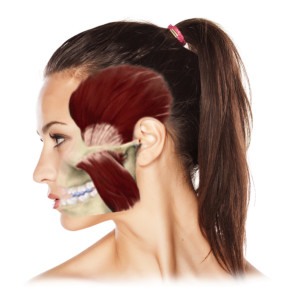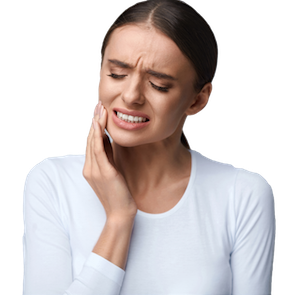A diagnosis of chronic craniofacial pain means that trigger points are the primary source of pain symptoms. Unfortunately, craniofacial or myofascial pain can mimic a variety of other conditions. Similar to headaches, the exact cause of craniofacial pain is often unknown. However, there are some working theories that might help to explain the symptoms of craniofacial pain. Let’s take a look at the signs, symptoms and causes of craniofacial pain:
Symptoms and Causes of Craniofacial Pain
Our Location
410 Rosedale Court, Suite 170,
Warrenton, VA 20186
540-717-9819
The Signs and Symptoms
The sign of a craniofacial/myofascial trigger point is a focused point of tenderness or pain felt when pressure is applied. Pressure to a trigger point made with a finger may also cause a sensation of shooting pain along nearby muscles, such as from the back to the neck or shoulders. The trigger point feels like a hard knot of tissue to the touch.
When a person is experiencing craniofacial/myofascial pain, it is often described as:
- A dull, aching or burning muscle pain
- Soreness or numbness frequently characterized by a sensation of referred pain.
However, it may not be apparent to the untrained observer because trigger points can be present deep within a muscle. A physical examination by a doctor is often required to uncover all present craniofacial trigger points.
When a trigger point becomes active due to injury or irregular use, the muscle fibers containing that trigger point tighten to create a taut band that keeps the muscle in a continuously contracted state. The muscle, in turn, becomes weak and inflexible and may even trap adjacent nerves, leading to secondary pain sensations, such as numbness and aching. If left untreated, surrounding muscles may eventually become overworked as they make up for the affected muscle’s inefficiencies. These overstressed muscles may then develop trigger points as well, creating complex networks of referred pain and myofascial pain patterns.
Trigger points may also be present within the muscle structure in a latent state. In these cases, discomfort is felt primarily if pressure is applied directly to the trigger point. A latent trigger point can become active if the muscle in which it resides is aggravated due to injury, overuse, illness or stress.
Causes of Craniofacial Pain
One underlying cause appears to be muscle injury or repetitive strain, which activate trigger points. Another cause might also be psychological stressors and physical strain because both can increase muscle tension along fibers referred to as the taut band, which is a hardened ropelike stretch of muscle fibers in which triggers are present. Lastly, craniofacial pain might originate from postural stressors, such as poor body posture which is held for prolonged periods of time, such as sitting at a desk.
While no single cause of craniofacial pain has been determined, the known potential sources of pain points to groups at higher risk of experiencing craniofacial pain:
- Women: Craniofacial trigger points are more likely to be active in women than in men—55 percent of women have latent trigger points compared to 45 percent in men.
- Middle-age adults: Chronic craniofacial pain most frequently develops during middle age. At younger ages, it’s believed that muscles are better able to cope with the strain of stress and overuse.
- Injured: Injury, trauma or illness increases the odds of developing or activating craniofacial trigger points.
- Stressed: An individual may aggravate a craniofacial trigger point as a result of stress or anxiety that leads to increased muscle tension.
- Inactive: A sedentary lifestyle or significant time spent in poor posture, such as at a desk, can weaken and strain muscles, making the occurrence of a craniofacial trigger point more likely.
Having well-conditioned strong muscles that can easily handle everyday activities puts an individual at lower risk of the condition. So, that means it is important to remain healthy and active so that you can protect yourself from injury and pain. And, while diet is not directly linked to craniofacial pain, overweight individuals are at a higher risk because muscles are strained by carrying the body’s mass.

While everyone carries some risk of experiencing craniofacial pain symptoms, improving physical and mental health in general and on multiple dimensions can help to reduce risk factors for craniofacial pain. Contact Dr. Bonnie Foster for more information on craniofacial pain.

